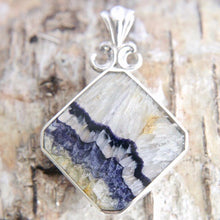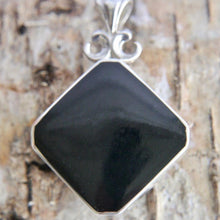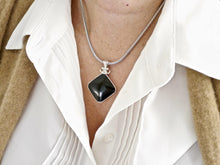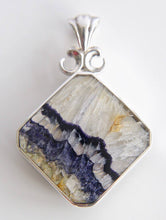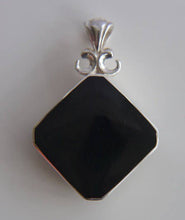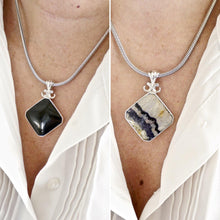
A unique reversible handmade pendant of Blue John and Whitby Jet in hallmarked 925 sterling silver. Comprising two looks in one, it’s the perfect addition to any outfit.
The stone size is 25mm x 25mm and the pendant is 40mm in length.
Designed by Andrew Thomson and made in our sheffield studio, we have selected and cut every stone for this design.
Because all stones are created naturally, each one is unique and may therefore vary from the image. However, we can guarantee that only the finest quality stones are used in our jewellery.
Now a little bit about the stones...
Whitby Jet Stone is an organic rock that is created when pieces of woody material are buried, compacted, and then goes through organic degradation. It is then heated, and what results is a coal seam. It’s usually black in colour, but there are also brown-coloured Jet Stones. It can be easily cut or carved, and it has a uniform texture that makes it possible to carve with accuracy. When rubbed and polished to a bright shine, it can have a very nice finish and its aesthetic value is greatly enhanced. You will be captivated by this stone’s beautiful silky glow!
Blue John (also known as Derbyshire Spar) is a semi-precious mineral, a form of fluorite with bands of a purple-blue or yellowish colour. In the UK it is found only at Blue John Cavern and Treak Cliff Cavern at Castleton in Derbyshire. During the 19th century, it was mined for its ornamental value, and mining continues on a small scale.











